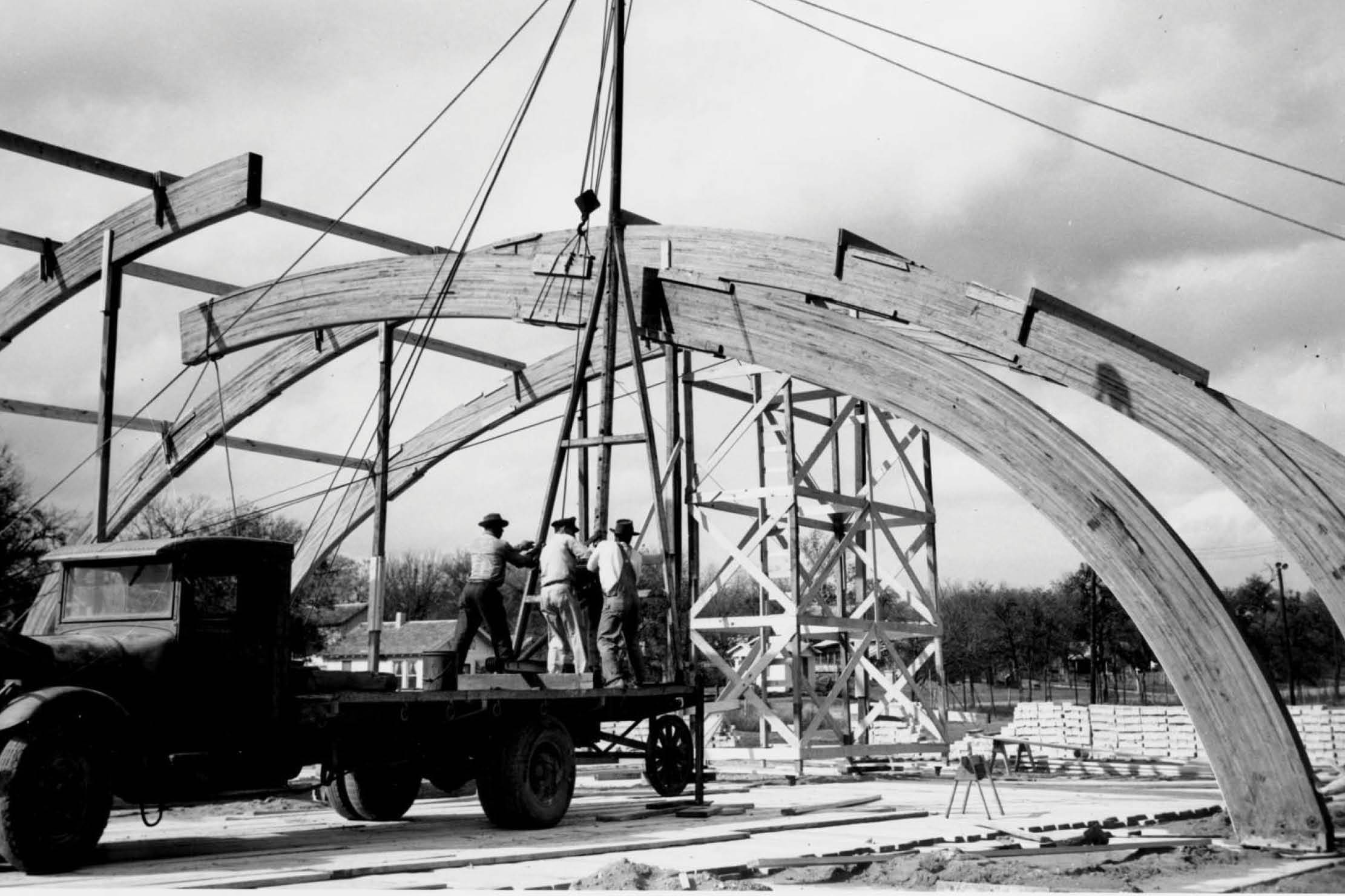Rosewood Park {History Spotlight}

Words by Amanda Covo Photo courtesy Austin History Center, Austin Public Library
Summertime pool dwellers, fierce baseball games and after-school programs have long had a home at Rosewood Park. Additionally, if its shade trees, picnic tables and stone walls could talk, they’d tell a story of community more than 90 years in the making.
In rapidly changing east Austin, a 17-acre stretch of land tucked away in the Rosewood neighborhood, the pocket of east Austin sandwiched between Airport Boulevard, Manor and Webberville roads, remains one of the only constants.
Just ask 81-year-old Delores Duffie, namesake to Rosewood Park’s Recreational Center and life-long Rosewood neighborhood resident, “I always had a thing for Rosewood Park,” said Duffie, who played on the park grounds as a young girl. “That’s all we knew. That’s the only place we had to go for recreation. Rosewood was just in my blood.”
The Delores Duffie Recreational Center is arguably the park’s signature building, a charming 14-room hill view stone house now home to after-school programs, workshops and community events. Local storeowner Rudolph Bertram originally acquired the land in 1875 where he built the house for his family. The city later purchased the land in 1928, fulfilling the new city plan that enacted racial segregation through its zoning laws. African Americans were relegated to east Austin where Rosewood Park would become the heartbeat of the community, and Duffie had a front-row seat.
Events like the Miss Rosewood Pageant (which she won in 1950) and countless sports games brought the community together. The Doris Miller Auditorium, named after a native Texan who was the first African-American recipient of the Navy Cross, hosted black WWII servicemen from various bases who came to attend dances and see entertainment organized by the park staff in collaboration with the USO. (The same space now houses a gymnasium, weight room and evening basketball games.)
With age, the dynamic Duffie, by then a mother of four, became known among city leaders for her activism to promote quality education and adequate housing for neighborhood residents.
“I never had any fear of confronting people about inequalities in our area,” Duffie said. “That was one reason people began to call on me for certain reasons. Not everyone likes to speak up or out.”
That spirit is what likely led to the election of Duffie as chair of the newly-created Rosewood Advisory Board in 1973, a post she maintained for 13 years. During her tenure, the Henry Green Madison cabin was moved from its original location off East 11th to the park grounds. In 1863, Madison, the first African American city councilman in Austin, built the small log cabin that he, his wife and their eight children called home.
Decades and a flood of new residents later, the cabin (a state historic landmark) now sits quietly under oak trees just steps away from the Rosewood pool and splash pad, tennis courts, a playscape and a bandstand overlooking baseball fields. Duffie refers to Rosewood Park as “the east Austin that once was.” Yet despite the historic growth—and the challenges and opportunities it presents—Rosewood Park remains a community treasure for all who call Rosewood home.
Rosewood Park is located at 2300 Rosewood Avenue in east Austin. The Rosewood Pool is open through August 19.










